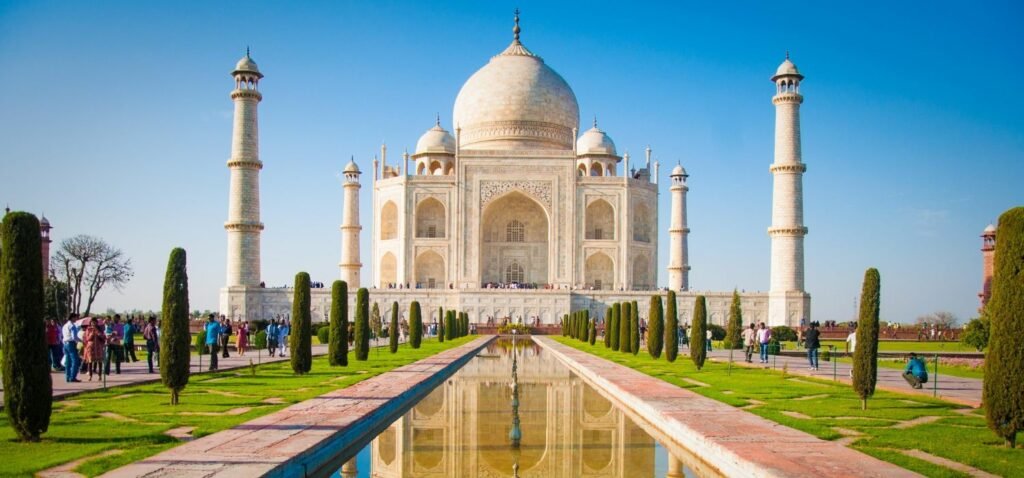Which Handicrafts Of Azad Kashmir Are The Most Famous?

In the picturesque valley of Jammu and Kashmir, diversity isn’t limited to culture and ethnicity but also to arts and crafts. For centuries, the region has nurtured a rich artistic heritage that continues to thrive even in the modern age. This artistic tradition has evolved, adding value in new forms and styles.
Azad Kashmir, Pakistan, stands out for its world-famous handicrafts. These crafts include Tweed Textiles, finely woven fabrics, and the luxurious Pashmina Shawls known for their softness and warmth. Additionally, the region is celebrated for its embroidered suits, which feature intricate stitching patterns, and exquisite Kashmiri silk saris that showcase the region’s textile expertise.
Papier Mache is another cherished art form, where delicate items are meticulously crafted from paper pulp. The Wood Carving Crafts of Kashmir are admired for their intricate designs, while Hand-Woven Carpets are known for their durability and beauty. These are just a few examples of the traditional handicrafts that have made Kashmir famous for its artistic prowess, each telling a story of skill, tradition, and cultural richness.
In this blog, we’ve gathered a delightful array of Azad Kashmir’s top handicrafts from Pakistan. These crafts hold a special place in the hearts of people not just across Pakistan but worldwide. They’re not just treasures but tokens of love that people often send to their loved ones abroad.
Most Famous Traditional Handicrafts of Azad Kashmir
1. Pashmina Shawls
If you ask, “What is the unique and exclusive handicraft of Kashmir?” the answer will be
Pashmina Shawls. Their rich history has graced the shoulders of royalty and elites for centuries. These shawls were once treasured as part of a wealthy woman’s dowry in Pakistan, India, and Nepal.
These shawls are woven from the fine wool of the Capra hircus, which is indigenous to the Himalayan region. The thread is renowned for its softness, warmth, and lightweight feel.
Today, Kashmiri Pashmina Shawl Handicrafts has gained global fame for its exquisite craftsmanship. Creating these shawls involves a labour-intensive process, showcasing the dedication and skill of the artisans.

2. Kashmiri papier-mâché
Kashmiri papier-mâché is an ancient craft that found its way to the region through the influence of the 14th-century Muslim saint Mir Sayid Ali Hamadani, who hails from Persia. This art form is rooted in paper pulp and has evolved over the centuries into a vibrant and colourful tradition.
Kashmiri artisans skillfully create a wide range of paper-mâché products, including intricately designed vases, bowls, cups (sometimes adorned with metal rims), papier-mâché boxes, trays, lamp bases, and various other small objects. Papier-mâché items from Kashmir have earned admiration both within the region and beyond for their unique blend of artistry and functionality.

3. Kashmiri Do-Shala
The Do-Shalla, aptly named “two-shawl,” is a unique and captivating tradition in Kashmiri shawl craftsmanship. The Mughal Emperor Akbar greatly admired This exquisite shawl style, who played a pivotal role in popularizing this fashion during his reign.
What makes Do-Shalla distinctive is that they are two shawls sewn together back to back, ensuring that the under surfaces remain concealed.
During Akbar’s time, the most coveted shawls were those adorned with intricate work in gold and silver threads or borders embellished with fringes of gold, silver, and silk thread. Being a pair of shawls, the Do-Shalla offers a remarkable canvas for such ornate detailing.
Among the various varieties of Do-Shalla, the Khali-Matan stands out. In the Khali-matan Do-Shalla, the central field remains plain and devoid of ornamentation, highlighting the elegance of simplicity. These unique and meticulously crafted shawls remain a testament to the rich heritage of Kashmiri craftsmanship, reflecting the artistic finesse and royal appreciation.

4. Wood Carving
Kashmiri walnut wood carving is a craft known for its exceptional fine woodwork. This craft relies on wood from the Juglans regia tree, which thrives abundantly in the Kashmir region. Kashmir holds a unique position as one of the few places where walnut trees are readily available, making it an ideal hub for this exquisite craft.
Artisans in Kashmir skillfully transform walnut wood into intricate and beautifully carved items. These include elegant tables, ornate jewellery boxes, and intricately detailed trays, among other exquisite pieces. The dense and richly hued walnut wood lends a touch of sophistication to each creation, making Kashmiri walnut wood carving a celebrated and sought-after craft that showcases the region’s mastery in woodworking and artistic finesse.

5. Kashmiri Carpets and Rugs
Carpets, rugs, and mats are unique in the rich tapestry of Kashmiri craftsmanship. The origins of carpets can be traced back to the oases and villages of Central Asia, where they were woven with intricate designs and patterns.
Kashmir is renowned for producing a wide array of handmade, hand-knotted floor coverings, including carpets and rugs. These creations showcase the region’s exquisite craftsmanship and attention to detail. Another traditional method for crafting these floor coverings involves felting wool, resulting in durable and cozy mats.
Kashmir’s carpets and rugs have earned acclaim for their functionality and artistic beauty, with intricate patterns and vibrant colours reflecting the region’s cultural heritage.
Here are some of the most famous Kashmiri Carpets and flooring.
- Namda
Namda is a traditional Kashmiri carpet made of felting wool. It’s adorned with intricate Aari embroidery or pieces of felt. This craft has deep historical roots and was favoured by Mughal Emperor Akbar. The Ministry of Skill Development and Entrepreneurship supports over 2,000 artisans in Kashmir’s 30 Namda clusters.
- Kashmiri Qaleen
Qaleen is a hand-knotted pile carpet, a product of Kashmiri handicraft made with wool or silk. Sultan Zain-ul-Abidin, also known as King Budshah, introduced this intricate craft to Kashmir in the 15th century. Sultan Zain-ul-Abidin brought skilled carpet weavers from Persia and Central Asia to Kashmir to train the local artisans in hand-knotted carpet making.
- Wagoo
Wagoo, also known as waguv or waggu, is a traditional Kashmiri mat crafted from reeds. These mats were meticulously hand-knotted and significant in Kashmiri culture and heritage. They were commonly used in households across the Kashmir Valley.
The craft of making Wagoo has historical roots dating back to the 15th century when Sultan Zain-ul-Abidin introduced skilled carpet weavers to Kashmir. These craftsmen, known as Kal baffs, were originally responsible for weaving carpets but eventually turned their talents to crafting Wagoo, which gained fame in the region during that period.

6. Kashmiri Embroidery
Kashmiri embroidery, known as ‘Tille’ in the local language, is vital to several Kashmiri handicrafts, including shawls, carpets, and even the traditional Kashmiri ladies’ pheran. It graces these items with intricate floral patterns crafted from delicate metal threads. Notably, Kashmiri embroidery work is a skill practised by both men and women in the region, a tradition that has been upheld for generations.
The charm of Kashmiri embroidery designs extends beyond these traditional items. It also finds its place in contemporary fashion and home decor. Kashmiri embroidery adorns sarees, suits, kurtas, bedsheets, wall hangings, and cushion covers, adding an exquisite touch to a wide range of products.

Role of Kashmiri Handicrafts in the Economy of Pakistan
Kashmiri handicrafts play a pivotal role in the economic landscape of Azad Kashmir. This industry contributes significantly to the region’s economic development and provides vital employment opportunities. Handmade products crafted through these traditional skills find markets within Pakistan and across the globe, serving as a source of income for artisans and traders alike.
One remarkable aspect is that Kashmiri handicrafts have been instrumental in alleviating financial hardships, especially for individuals with physical disabilities. The industry’s exposure to international markets has garnered positive feedback, inspiring many young individuals to choose it as their profession.
Kashmiri Handicrafts is the second-largest and preferred industry in the Kashmir Valley. Its economic significance underscores the region’s age-old craft tradition’s cultural and economic vitality.

Conclusion
In Azad Kashmir, the most famous handicrafts are a true reflection of artistry and tradition. These crafts showcase the region’s creativity, from the luxurious Pashmina shawls to the intricate carpets and rugs. Namda felting, Qaleen carpets, Wagoo mats, and embroidery are also cherished. These handicrafts preserve tradition and contribute to the region’s culture and Economy, making them integral to Azad Kashmir’s identity.

